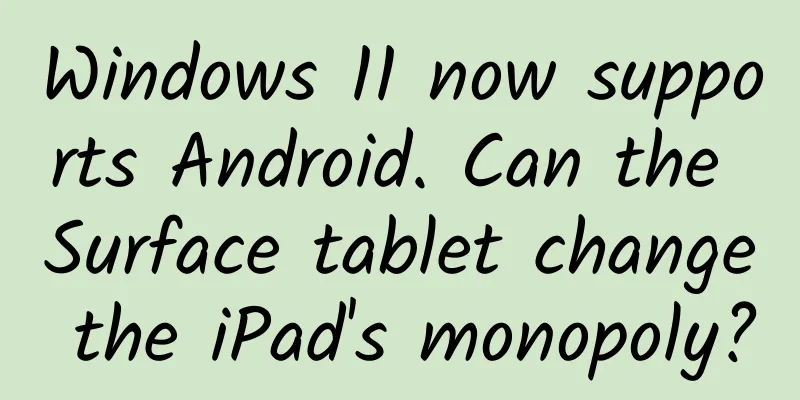Taking Meituan Waimai as an example, dismantling the operation routine of the APP red envelope function

|
We often see various kinds of red envelopes on Internet products, and each of these red envelopes has different ways of playing. Today, we will take Meituan takeaway red envelopes as the main focus to analyze the red envelopes that we come into contact with in our daily operations . The role of red envelopesFirst, let’s take a look at what the functions of red envelopes are? 1. Attract new customers Based on human nature, most users are easily attracted by free things or small profits, and merchants subsidize users through red envelopes. Users receive red envelopes and then engage in consumption behavior. While acquiring new users, it also helps cultivate user habits and capture market share. A typical example is the red envelopes Didi gave to passengers when it first emerged. 2. Improve conversion rate Merchants distribute red envelopes to target users to encourage them to make or complete purchase orders as soon as possible, thereby increasing order conversion rates. Such as limited-time red envelopes and red envelopes with discounts on purchases over a certain amount. 3. Complete certain tasks Some businesses will issue red envelopes to users in order to complete certain tasks and indicators. Users will receive or activate the red envelopes after completing designated behaviors. This usually happens when merchants want to increase registration rates , activations , card bindings, etc. For example, as mentioned below, users who bind their bank cards to Meituan will receive a 5 yuan red envelope. 4. Promote activity Red envelopes also have another important function, which is to increase the user activity and daily activity of the product. For example, check-in red envelopes, lottery red envelopes, etc., encourage users to continue using the product, thereby achieving the goal of increasing activity. Types of Red PacketsFrom the perspective of the types of red envelopes, they can be divided into the following categories: 1. No threshold for red envelopes No-threshold red envelopes usually have no restrictions on their use, or only have time limits. Users can use red envelopes across the merchant’s products. 2. Red envelopes for purchases over a certain amount That is, the user's consumption or payment amount must reach a certain amount before the red envelope can be activated and used. For example, the red envelopes that are common in e-commerce, such as the 10 yuan discount for purchases over 50 yuan This type of red envelope sales conversion is more purposeful. 3. Limited time red envelope As the name suggests, this type of red envelope is time-sensitive. Users are required to use the red envelopes within a specified time period, otherwise they will become invalid. The purpose of this type of red envelope is to create a sense of urgency for users. Due to their aversion to losses, users will usually use the red envelope before it expires, even if the item they purchased is not particularly necessary. 4. Red envelopes for designated merchants/products Red envelopes can only be used in specific merchants or stores. Usually, merchants and platforms jointly issue red envelopes to increase sales of a single store. The other type is the designated product red envelope, which users can only use when purchasing a certain product or category of products. It is also to increase the sales of a certain product or category of products in a targeted manner. 5. Red envelope for designated users This type of red envelopes are distributed to different users based on user stratification, such as red envelopes for new users and gratitude red envelopes for old users. The main gameplay of Meituan takeaway red envelopeThis article mainly analyzes the red envelopes of Meituan Takeaway APP and mini programs . 1. Red envelopes fall from the sky Rules: Users will receive three red envelopes when they open Meituan Takeout for the first time every day. The red envelopes include both general red envelopes and limited-time red envelopes from designated merchants, usually in a 1:2 ratio. The red envelopes from designated merchants are estimated to be from merchants where the user has a purchase record, or merchants that are relatively close. It is not yet known whether merchants can obtain exposure to this advertising space through bidding or other business cooperation. When users open Meituan Takeout, they usually have a clear purpose - I want to order takeout. When users open the APP, they will receive a red envelope, which makes them feel that they are getting a good deal and also helps them speed up the process of placing an order. Since there are red envelopes, the probability of users choosing to consume at designated merchants will greatly increase. At the same time, in my personal opinion, this startup red envelope is also an invisible and valuable advertising space, which can attract businesses to bid for this advertising space. 2. New User Red Packet Rules: After a new user downloads and opens the APP, they will be prompted with “Register to receive a gift package worth up to 60 yuan.” After completing the registration, the user will receive a red envelope with a random amount. Red envelopes are divided into new customer red envelopes, general red envelopes, and limited-time red envelopes. At the same time, the red envelope page lists restaurants that are closer to the user. Meituan Waimai’s new user red envelopes are responsible for:
3.Task bonus Rules: Users who complete the order within a limited time (actual payment amount exceeds 25 yuan) can get a 5 yuan red envelope 4. Share the red envelope after placing an order successfully Rules: After the user successfully places an order, share the red envelope to WeChat groups and Moments , and the Nth person will get the largest red envelope. In order to get a big red envelope, users cannot just share it with themselves or a few friends, but will share it with several groups, forming a dissemination pattern, and users who receive the red envelope will also want to experience using it. It achieved the effect of fission, attracting new customers and promoting activation. At the same time, the value designed by the Nth person is usually between 5 and 8, which gives the user the feeling that this goal is very close to him/herself and I have a chance to give it a try. Such a design goal is clear and achievable for every user. In addition, compared with the lucky red envelope, this adds more fun. 5.9.9 yuan to buy 30 yuan red envelope package Rules: Each user is limited to one purchase per month, which is divided into 6 5-yuan red packets and can be used cumulatively when placing an order. The original price is 15 yuan, and the promotional price is 9.9 yuan. Here, red envelopes have directly become commodities. Originally, red envelopes were rewards, but now they have become preferential purchases. The 9.9 yuan bait on the page is very attractive, and the countdown adds urgency. List permissions to enhance user satisfaction and provide more reasons to buy. It looks a bit like a membership service. Why is this form accepted by users? I think that firstly, Meituan’s group size is large enough and users are already accustomed to Meituan’s food delivery; secondly, even if the original price is 15 yuan, it is still a discount and can be used in conjunction with other coupons, so why wouldn’t users want to do so? For Meituan, the way to use red envelopes has been broadened, and red envelopes can also be used to collect money, reducing subsidy costs. 6. Sign in red envelope Rules: Participants pay 1 yuan and sign in once a day to participate in the bonus sharing. The check-in time for Meituan Takeout is designed to be very targeted. There are three check-in times a day, and you can get bonuses based on how many times you check in. Winning users can also participate in the bonus sharing the next day for free. The platform uses the slogan of "reminding users to eat on time". The check-in times correspond to breakfast, lunch and dinner. After the user completes the check-in, it is exactly time for dinner. It is very natural to place an order for takeout after checking in, or to order takeout first and then check in. Sharing bonuses by signing in provides users with a reason to open the app (multiple times) every day. At the same time, this low-cost way of making money is also suitable for spreading among friends. 7. Invite friends to get red envelopes Rules: Invite friends to become new users of Meituan Waimai, and they will receive a 15 yuan red packet. If a friend completes an order with an actual payment amount of more than 5 yuan within 7 days without any refund, the old user can receive a 10 yuan reward red envelope. In addition to the common WeChat channel , face-to-face invitations are also available. After clicking, the page is also very simple and direct, which also takes offline social scenarios into consideration. Eating takeout at lunch is a social scene. When users eat together, it is more direct to take out the QR code and scan it. There is also a line of small words on the page saying "The success rate will be higher if you invite these friends". After clicking on it, the user will be guided to invite users in the mobile phone address book who have not registered for Meituan Takeout (mobile phone number identification). The invitation will be in the form of text message. The content of the text message is "Come and get the 15 yuan red envelope from Meituan Takeaway. I just want to treat you to a meal + H5 link" Whether scanning a code or sending a text message, Meituan will redirect users to an H5 page for receiving red envelopes. Users only need to enter their mobile phone number and verify as a new user before being redirected to guide users to download. The operation is simple and first tells users that they have received a red envelope, rather than asking them to download first and then receive the red envelope. The main gameplay of competitive red envelopesMeituan Takeout’s main competitor is Ele.me. Here we will briefly analyze Ele.me’s red envelope strategy. 1. New user red envelope Rules: New users can receive gift packages up to 50 yuan, and red envelopes of different amounts can be opened randomly. The red envelopes received by new users are similar to those received by Meituan Takeout, and are split into red envelopes for different scenarios. Encourage users to use the product more often when they are most interested in it. 2. Membership bonus Rules: After becoming a member, you will receive monthly bonuses which can be used to redeem red envelopes. On the surface, Ele.me’s approach seems similar to Meituan’s, where users pay cash in exchange for group red envelopes. However, in reality, Ele.me’s red envelopes have many restrictions, while Meituan’s red envelopes can be used when placing any order, and can be used in combination. In terms of user perception and experience, happiness is low. 3. Invite friends to receive red envelopes Rules: Invite friends, and if your friends successfully register and place their first order through the APP over 2 yuan and their second order over 10 yuan within 14 days, you can get a cash red envelope of up to 10 yuan. Cash withdrawal is available, and the withdrawal threshold is 10 yuan. Red envelopes are an important means of attracting new customers, and both Ele.me and Meituan Waimai have adopted a win-win model. Both parties who invite others can get rewards. In terms of time threshold, Ele.me has lower requirements (14 days VS 7 days). However, Ele.me actually has a higher threshold for friends to place orders. The first order must be 2 yuan, and the second order must be over 10 yuan before you can get the reward (this is what the Ele.me rules say, but I personally feel that this is not very reasonable. The threshold has been artificially raised, and it may also be a misunderstanding) 4. Sign in to receive red envelope Ele.me allows users to sign in and receive cash red envelopes, with a progress bar to show how much money they can get tomorrow, giving users clear expectations. 5. Entertainment red envelope Unlike Meituan Waimai, Ele.me also offers red envelopes with a more entertainment-oriented feel. They are red envelope planting combined with gamification and PK topics combined with hot social topics (the winner shares the red envelope). A more entertaining form of red envelopes can provide users with more fun, increase user engagement, and prevent the reasons for users to share from being too monotonous. SummarizeAs an important marketing and operation method on the Internet, red envelopes need to consider the following points when designing a red envelope mechanism:
Source: Product Dog Diary (chanpingdog) |
<<: One article is enough for the year-end marketing plan of wine promotion
>>: Three-class training camp "Low-cost customer acquisition in the education industry"
Recommend
Eliminate the "ecological killer", this time it is the MeeMee team that made a great contribution!
Recently, Canada goldenrod It has appeared again ...
Is all “black metal” really black?
Since the late 20th century, society has entered ...
Ling'er Investment Research Diary "Lightning Rod Escape Top Method" is one step ahead, building positions and escaping tops with indicators
Ling'er Investment Research Diary "Lightn...
How should operations use data?
How should operations use data? This question ste...
Credit Suisse: Tesla's vehicle deliveries are expected to hit a new high in Q1 2022, with an expected year-on-year increase of 120,000 vehicles
Although the entire automotive industry is experi...
Shaking your bottle of mineral water more than 100 times before drinking it can help you live longer and fight cancer? Many people are unaware of this…
Reviewer of this article: Chen Haixu, Deputy Dire...
What is the difference between a calcium tablet that costs 2 yuan and one that costs 200 yuan?
When it comes to preventing osteoporosis, many pe...
Talking about fission activities: How to increase tens of thousands of fans per day through one activity?
As we all know, almost every company is talking a...
Is the universe starting to produce "raspberries"? In fact, it is a newly discovered supernova remnant! | Expo Daily
Is the universe starting to produce "raspber...
How to write an excellent event planning and implementation plan?
If the product is from 0 to 1, then marketing is ...
New Atlas: Wildfire exposure may increase cancer risk, study says
In a first-of-its-kind study examining the relati...
Take stock of online marketing and promotion channels! One picture is enough, I collected it~~
Introduction: This article divides the nine commo...
Attention! Yersinia enterocolitica can cause illness. Check your refrigerator to see if you have it.
Bought something The first thing that comes to mi...
WeChat Moments now supports posting emoticons and setting friend permissions: chat only
On December 23, iOS WeChat 7.0.9 was updated. The...
[Topic Marketing Case] A girl lost 50 pounds in half a year, several practical examples of weight loss marketing!
Today we solve a problem: "Weight loss is so...









